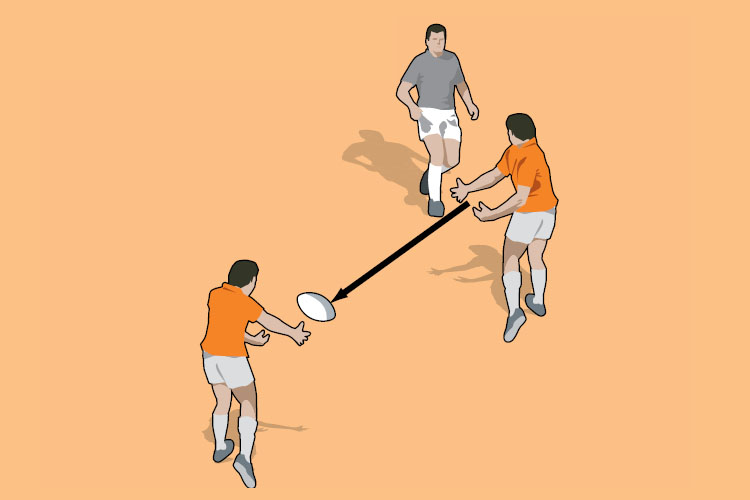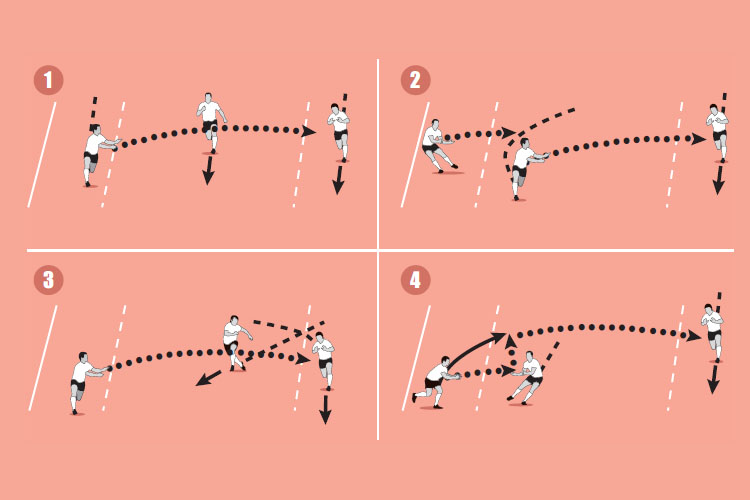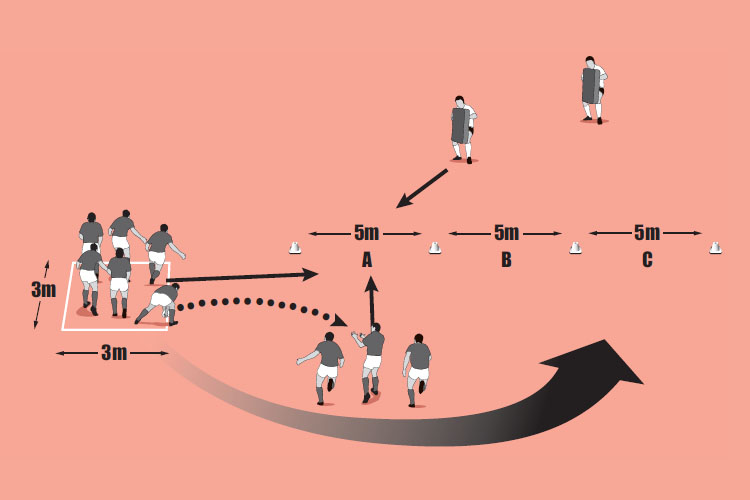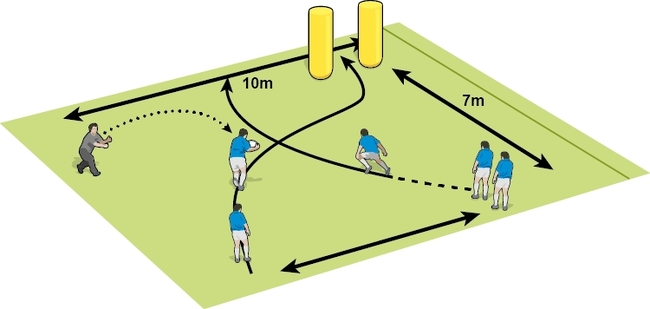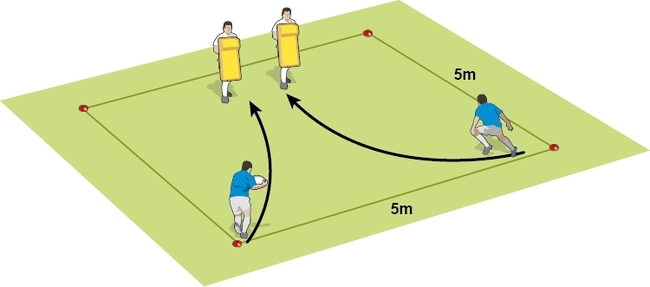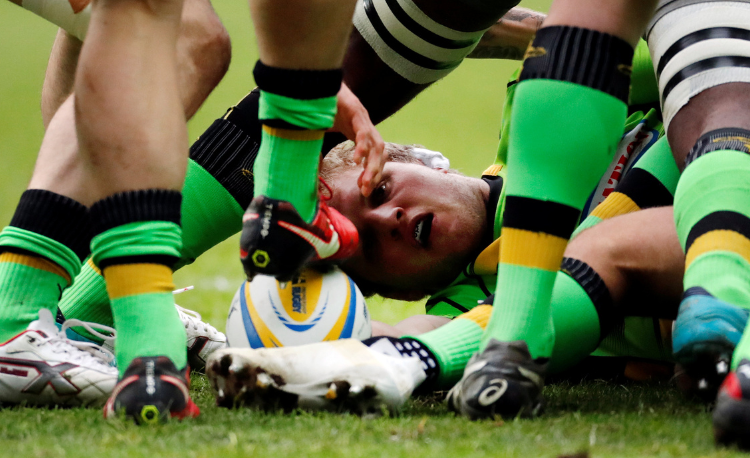Pass out, pass in
Passing moves the ball to a player in a better position. Passes can also be used to manipulate the defence. A wide pass followed by a short pass back the other way is a surprisingly easy way to create gaps in the defence. Two backs could put a strong running forward into a gap, reducing the need for that forward to pass the ball.
Warm up time: 7-10
Session time: 10-15
Development time: 10-15
Game time: 10-15
Warm down time: 7-10
What to think about
- Are the ball carrier and first receiver playing at game speed to draw the defence across? Ask the players to play at a speed faster than they would normally play in a game. There may be a few mistakes but the pace will have increased noticeably.
- Can the timing of the inside pass be improved, as the receiver sometimes has to catch the ball on their hip or stretch too far for the ball? Communication is key, plus a good knowledge of how each player reacts and passes under pressure. Match up typical pairings and groups who might find themselves together on a match day.
set-up
- Attack the space and make the defenders drift across to the first receiver.
- Throw a long pass to stretch the defence.
- Pass back inside once the defenders commit to the outside man.
- Second receiver angle your run back against the direction the defenders came from.
What you get your players to do
Set up a pair of defenders at the corner of a box. On your signal three attackers move forward and try to score at the far side of the box. A long initial pass is made to stretch the defenders before the ball is passed back inside to the third attacker who breaks past the defenders. The defenders aim to close down the first receiver to start with. The final ball carrier won’t always find open space, so he may need to bust through a tackle.Development
- Increase the number of attackers so the first receiver has two inside pass options.
- Start some defenders from the corner who slide across and others that start in front of the attackers.
- Eventually, with practice, the wide player will be able to pass inside without looking which will further add to the deception. It’s only risky if you don’t practice.
Related Files

Game situation
Set up a conditioned game playing eight a side. Players cannot make two passes in the same direction – they must pass left followed by a pass to the right and so on. Start with touch tackles until the players get the hang of the game. Once comfortable change it to two passes one way followed by one pass back. Players have to think about attack and defence when playing these types of games.What to call out
- “Make the defenders move”
- “Hold the ball in two hands”
- “Hands up as a target”
- “Keep some depth to maintain momentum”
Newsletter Sign Up
Coaches Testimonials

Gerald Kearney, Downtown Las Vegas Soccer Club

Paul Butler, Florida, USA

Rick Shields, Springboro, USA

Tony Green, Pierrefonds Titans, Quebec, Canada
Subscribe Today
Be a more effective, more successful rugby coach
In a recent survey 89% of subscribers said Rugby Coach Weekly makes them more confident, 91% said Rugby Coach Weekly makes them a more effective coach and 93% said Rugby Coach Weekly makes them more inspired.
Get Weekly Inspiration
All the latest techniques and approaches
Rugby Coach Weekly offers proven and easy to use rugby drills, coaching sessions, practice plans, small-sided games, warm-ups, training tips and advice.
We've been at the cutting edge of rugby coaching since we launched in 2005, creating resources for the grassroots youth coach, following best practice from around the world and insights from the professional game.

